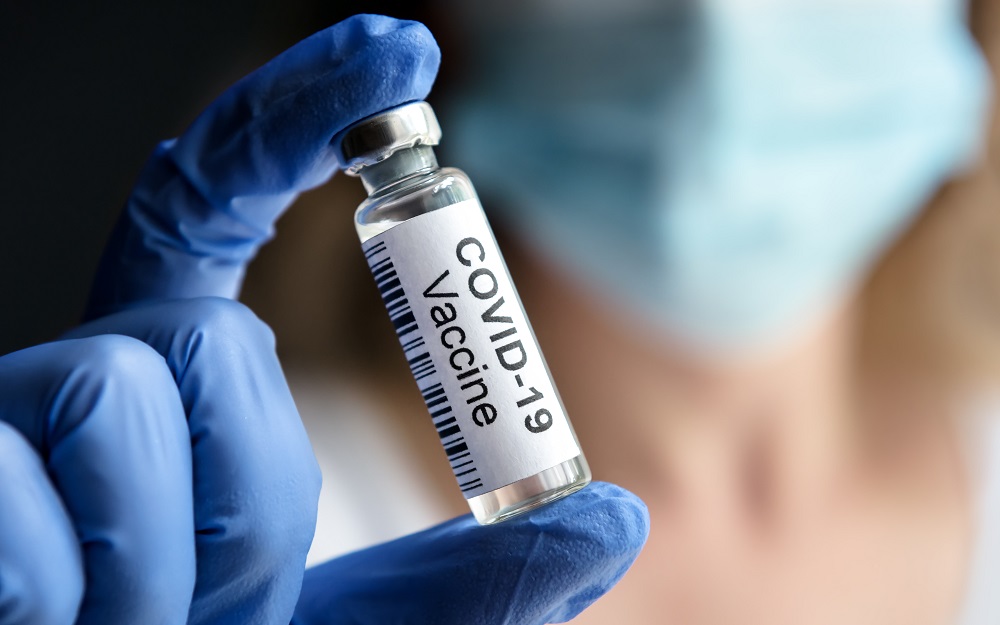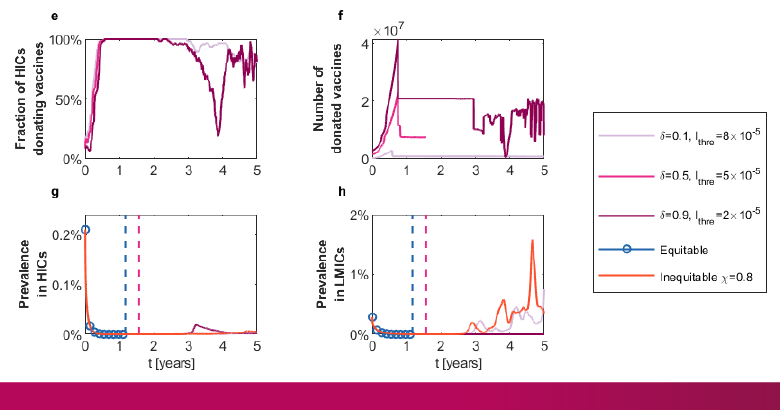CityU research estimates vaccine donation from high to low- and middle-income countries will help end COVID-19 pandemic
COVID-19 vaccines give hope in ending the pandemic, yet they are unequally distributed globally. Infection and mortality rates for COVID-19 in low- and middle-income countries could be significantly reduced if high-income countries donated 46% to 80% of their COVID-19 vaccine stocks to them, according to a team led by a researcher at City University of Hong Kong (CityU). This action will better protect high-income countries in the long run and accelerate the ending of COVID-19.

This estimation is based on a mathematical model developed by the team, which is led by Dr Zhang Qingpeng, Associate Professor in CityU’s School of Data Science (SDSC), together with researchers from mainland China. Their findings were published in the academic journal Nature Human Behaviour under the title “Equitable access to COVID-19 vaccines makes a life-saving difference to all countries”.
This is the only research article featured in the “Focus” section in Nature Human Behaviour. The section featured a collection of articles, including opinion pieces from the representatives and experts from the United Nations, World Health Organization and the Vaccine Alliance (GAVI), discussing hurdles towards vaccine equity and possible solutions.
Global vaccines distribution will affect the pandemic trend
Dr Zhang and his team showed how vaccines are unequally distributed globally based on the data from the UK data platform “Our World In Data”. As of February of 2022, more than 70% of people in high-income countries had at least one dose of COVID-19 vaccine; while in low-income countries, that number is around 10%.
“‘Vaccine equity’ is demanded around the world. Yet we need data as the basis to understand the consequences of global vaccine inequity and find out practical solutions to achieve vaccine equity,” said Dr Zhang.
However, data-driven research on global vaccine coordination is rare. By integrating actual data for global air transport with an epidemic model, the team estimated the effects of COVID-19 vaccination, COVID-19 variants and the movement of people on the COVID-19 transmission process in 179 countries and regions.
In the study, “high-income countries” includes all high-income countries defined by the World Bank, plus China and Russia due to their capability for the mass production of COVID-19 vaccines. Other countries are classified as “low and middle-income countries”.
The research team set out two scenarios as described below:

1. COVID-19 vaccines are fairly allocated to all countries, regardless of their wealth, but according to four prioritisation criteria: population size, incidence, prevalence and mortality rate.
2. COVID-19 vaccines are not fairly distributed. High-income countries receive the largest share, leaving the remaining vaccines to be allocated to low- and middle-income countries according to the above four criteria.
???“Vaccine inequity” may prolong the global pandemic
The analysis shows that the infection rate for high-income countries which have large stocks of COVID-19 vaccines, could drop sharply over the short term under an uneven distribution of COVID-19 vaccines. However, low- and middle-income countries with insufficient COVID-19 vaccine supplies would have a high infection rate and face a higher risk of the emergence of variants. As a result, the vaccine the people received in high-income countries may not be able to protect against the variants, and the infected cases in high-income countries can surge again. And the global COVID-19 pandemic may persist.
Prioritise vaccines to countries with high incidence, prevalence and mortality rates
“According to our analysis, the more uneven the distribution of COVID-19 vaccines, the more serious and frequent outbreaks of COVID-19 will happen,” added Dr Zhang.
On the contrary, the team discovered that an even distribution of vaccines can help stop the global spread of COVID-19 variants to a large extent, accelerating the end of the pandemic.
What is the most effective way to distribute the vaccines then? “According to our calculation, under most of the circumstances, vaccines should be prioritised to countries with high incidence, prevalence and mortality rates to stop the spread of COVID-19 there. However, in rare cases, for example, if the COVID-19 variants are highly contagious, then vaccines should be prioritised to countries with a large population to curb the incidence rate,” Dr Zhang suggested.
High-income countries donate 46% of vaccines will significantly lower mortality rate in low- and middle-income countries

Based on the model under different scenarios of COVID-19 vaccine donations, the CityU team concludes that the death rate of low- and middle-income countries would be decreased, and there would be fewer variant outbreaks if high-income countries whose public health situations are generally under control donate 46% to 80% of their COVID-19 vaccines to low- and middle-income countries.

“We suggest that high-income countries to donate COVID-19 vaccines timely to low- and middle-income countries. It is not only a moral responsibility, but also an effective way to curb virus transmission and protect everyone in the world. It will be a win-win for both high-income countries and low- and middle-income countries,” said Dr Zhang.
He also pointed out that high-income countries donating vaccines to low- and middle-income countries around the world, rather than donating to the neighbouring countries, is more effective in stopping the spread of the virus.

Dr Zhang and Professor Daniel Zeng Dajun of the Institute of Automation in the Chinese Academy of Sciences (CASIA) are the corresponding authors for the paper. The first author is Ye Yang, a PhD student under the supervision of Dr Zhang in the SDSC. The other collaborators are Dr Sean Yuan Hsiang-yu, Assistant Professor in CityU’s Department of Biomedical Sciences, and researchers from Shanghai Jiao Tong University and CASIA.
DOI number: 10.1038/s41562-022-01289-8